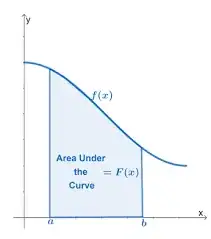Let consider the function $f:\mathbb R \rightarrow I$, where $I$ is $(0,1)$. Consider that $f$ is both continuous and bijective. Let's assume that it is strictly increasing. Now consider a real number $\alpha \in I$.
What do we have to prove is that for every $\alpha \in I$, there are the irrational numbers $a$ and $b$ such that:
$$\int_{a}^{a+1} f(x) \,dx\ = \alpha+\int_{b}^{b+1} f(x) \,dx\ $$
In other words, that there are two irrational numbers $a $ and $b$ such that the area under the function $f$ between the points $a$ and $1+a$ is greater than the area under the function $f$ between the points $b$ and $1+b$ with the value $\alpha$.
$\textbf{My attempt.}$
What I got is:
Since $f$ is both continuous and bijective then it is strictly monotonous. The Hypothesis told us that it is strictly increasing. So we are fine at this point.
What we have to prove is that the area under the function $f$ between the points $a$ and $1+a$ is equal with $\alpha$ plus the area under the function $f$ between the points $b$ and $1+b$.
This is what seems to be the area under function $f$.
What do we have to prove is that for every $\alpha \in I$, there are the irrational numbers $a$ and $b$ such that:
$$\int_{a}^{a+1} f(x) \,dx\ = \alpha+\int_{b}^{b+1} f(x) \,dx\ $$
